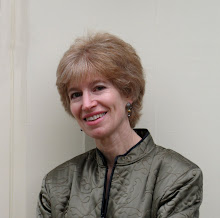So how did Baltimore react to this news of a female editor in 1806, at a time when such a thing was generally unheard of?
Initially, at least--as far as can be determined--there wasn't much of a reaction at all. But in the same editorial quoted in the previous post, the new female editor (later female editors would embrace the term "editress," but this one didn't) announced that there would soon be "alterations" in the "plan" of the Companion--alterations that were to include more assistance for the overworked editor. And, as it turned out, these alterations also entailed scrapping the Companion altogether and founding a new publication, to be called the Observer. The last issue of the Companion appeared at the end of October, and a prospectus for the Observer appeared towards the end of November. Although the first few issues of the Observer are either obscure or misleading about the editor's sex (the editor is sometimes referred to as "he"), it was soon revealed to be female--and,not surprisingly, to be the same female who had previously been editing the Companion.
Why start a new magazine? Apparently because the new editor wanted to inject more satire into the magazine than the philanthropist who had backed the Companion was willing to tolerate (at least, that's the explanation that appears later on). This new magazine was to be not only more satirical but, at times, downright acerbic, skewering various denizens of Baltimore who were thought to be wanting in culture or refinement. The change in tone was reflected in both the name change (from the Companion to the Observer)and the change in motto (from "A safe companion and an easy friend" to "The friend of Socrates, the friend of Plato, but above all, the friend of truth").
But here's the real question, at least for our purposes: who was this new female editor? Given the early 19th-century penchant for anonymity and pseudonyms, her real name appears nowhere in either publication (the pseudonym she eventually settled on was "Beatrice Ironside"). As anyone who has read previous postings of this blog might know, I have identified her as 26-year-old Eliza Anderson--the daughter of a Baltimore doctor, the abandoned wife of a ne'er-do-well merchant, and the mother of a now six-year-old girl--and the friend of a local celebrity, Betsy Patterson Bonaparte.
How do I know Eliza was the editor? The first clue comes from an early contributor to the Observer: Benjamin Henry Latrobe, the first professional architect in the United States, who oversaw the design and construction of the U.S. Capitol. (There was a terrific documentary about his life on PBS not long ago.) On October 28, 1806--just after the last issue of the Companion had appeared, and shortly before the Prospectus for the Observer would appear--Latrobe wrote a note on the flyleaf of a journal he kept: “'No. 1. Ideas on the encouragement of the Fine Arts in America’ written at the instance of some friends in Baltimore for the paper edited by Mrs. Anderson.” The essay that follows in Latrobe's journal corresponds exactly to an article that appeared in the Prospectus, signed "B." (A second installment appeared in the Observer's first issue.)
Conceivably there could have been some other "Mrs. Anderson" editing a magazine in Baltimore in 1806, but this seems unlikely. Especially when you add to Latrobe's note the evidence that was to come a year later in the form of impassioned denunciations of "Mrs. E.A., the fierce fury who edits the Observer," in Baltimore's newspaper.
But we're getting ahead of our story...
Sunday, February 21, 2010
Subscribe to:
Post Comments (Atom)





No comments:
Post a Comment